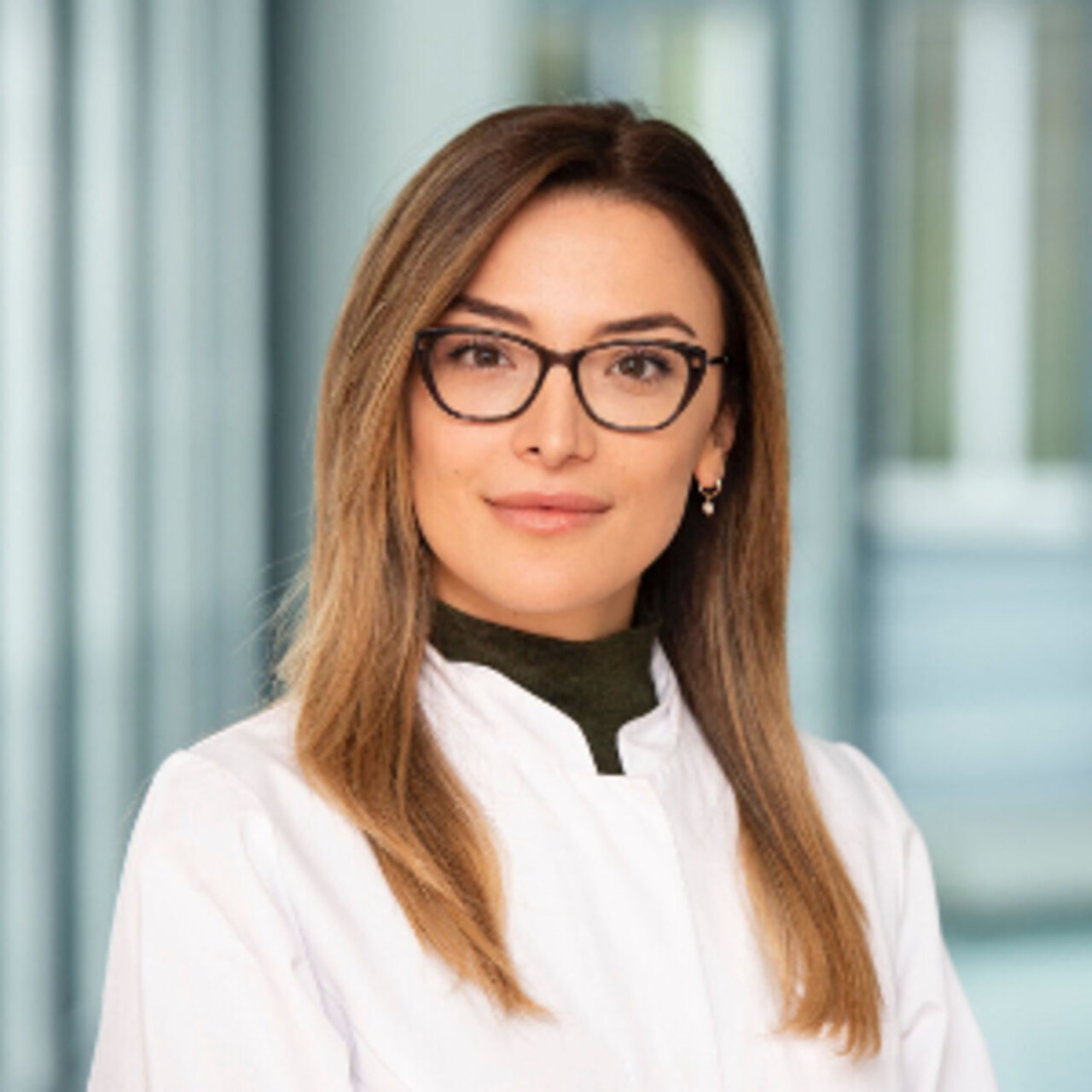Specialists in Atrial Fibrillation
7 Specialists found
Dr Brunilda Alushi, PhD, FEACVI
Internal Medicine and Cardiology, Prevention and Imaging Diagnostics
Munich
Information About the Field of Atrial Fibrillation
Definition: Atrial Fibrillation
Atrial fibrillation is a disturbance in the electrical spread of excitation in the heart, which leads to an increased contraction frequency of the atriums or the atrial chambers, which can also spread to the ventricles. Atrial fibrillation is a common cardiac dysrhythmia that affects about 1-2% of the population in Germany. The disorder can occur in the context of various underlying heart diseases or other conditions.
Pathophysiology: Procedure and Danger in Atrial Fibrillation
In its normal state, the heart is driven by its pacemaker, the so-called sinus node. An excitation conduction system that transmits the electrical signals to the heart is turned on afterward. The normal heart rhythm is regular, and between 60 and 80 beats per minute at rest.
Atrial fibrillation causes pathological irregularities: arrhythmically circulating electrical excitation occurs in the atrium, which prevents expected stimulus spread. As a result, the atriums contract uncoordinatedly at a frequency of more than 350 times per minute.
In the beginning, the rhythm disturbances usually occur in episodes, called paroxysmal in medical terminology. They are characterized by the fact that they start spontaneously and end in less than seven days. In most cases, even a spontaneous termination can be seen within the initial 24 hours. In the case of continuous rhythm disturbances, it is called persistent atrial fibrillation.
Causes: What Are the Causes of Atrial Fibrillation?
In about 15% of patients, primary atrial fibrillation is noticed without heart disease. The origin of the disease cannot be determined. In the remaining cases, heart disease is present, among others,
- Myocarditis
- Mitral stenosis and other heart valve alterations
- Coronary heart disease
- Chronic heart failure
- Myocardial insufficiency
- Atrial septal defect (ASD) and other congenital heart defects
Symptoms: How Is Atrial Flutter Noticed?
In up to one-third of the affected patients, atrial fibrillation initially goes unnoticed. Possible symptoms are:
- Heart stumbling or palpitations
- Chest pain
- Feeling anxiety or fear
- Irregular pulse
- Dizziness
- Unconsciousness
- Anxiety or inner restlessness
Diagnosis: How Is Atrial Fibrillation Detected?
The first aid to diagnosis is the electrocardiogram (ECG). The ECG provides a quick assessment of heart function and a lot of information about possible heart disease. However, it is only a short recording of heart activity. A rhythm disturbance is often overlooked in the resting ECG, as it does not necessarily occur at the moment of recording. Therefore, a long-term ECG is always indicated if atrial fibrillation is suspected. The patient wears an ECG device for 24 hours so that the measurement can take place over the entire period.
In the case of newly discovered or suspected atrial fibrillation, other diseases such as hyperthyroidism, heart disease, heart valve disease, inflammation (e.g., myocarditis), or heart muscle diseases should always be searched for. An ultrasound of the heart, also known as echocardiography, can be helpful in this regard.
Therapy: How Is Atrial Fibrillation Treated?
The therapy of atrial fibrillation is based on the following principles:
1. Preventing thromboembolic incidents
2. Preventing too high ventricular rate
3. Restoring sinus rhythm in suitable patients
4. Upstream therapy
Thromboembolism prophylaxis is preceded by evaluating the patient's risk of stroke, carried out using the CHA2DS2VASc score. High-risk patients receive lifelong blood thinning with drugs such as Marcumar. Preventive measures regarding the possible formation of thromboembolism are not taken in low-risk patients.
Drug-based frequency control is used to prevent too high frequencies. The aim is to limit atrial fibrillation to <110 per minute. The drug of choice is a beta-blocker, e.g., Metoprolol. If drug therapy is insufficient or impossible, an electric pacemaker can be implanted with catheter ablation of the AV node.
The restoration of the sinus rhythm, also called cardioversion, refers to transforming the atrial fibrillation into a normal sinus rhythm. This rhythm control does not have a good prognosis for all patients. Cardioversion can be treated with antiarrhythmic drugs.
If drug therapy is not successful or a recurrence of atrial fibrillation, ablation of the atrial fibrillation or a catheter ablation can help.
Upstream therapy refers to searching for diseases that trigger atrial fibrillation, e.g., arterial hypertension and their treatment.
Life Expectancy and Chances of Recovery from Atrial Fibrillation
Untreated atrial fibrillation takes a progressive course: the cardiac dysrhythmia develops from initially asymptomatic atrial fibrillation to seizure-like occurrence and persistent atrial fibrillation. The final stage is not life-threatening in itself, but can also lead to consequential damage in the long term.
Atrial fibrillation can cause "stagnant" blood in the heart, leading to blood clots, so-called thrombi, which increases the risk of strokes and other heart diseases. Besides, due to the additional long-term load on the heart, it can lead to cardiac insufficiency. Therefore, it is essential to treat the cardiac dysrhythmia at an early stage, even if the symptoms are still mild.
Targeted early therapy can have a strong positive influence on the prognosis of patients. Young patients with optimal treatment are now expected to have a life expectancy that corresponds to the healthy age group.
Sources:
Herold et al.: Innere Medizin. Eigenverlag 2012, ISBN 978-3-981-46602-7.
Schnabel et al.: Prävalenz und Risikofaktoren von Vorhofflimmern in Deutschland. In: Herz. Band 40, Nummer 1, 2015, doi: 10.1007/s00059-014-4199-6, S. 8–15.
Gillinov et al.: Rate Control versus Rhythm Control for Atrial Fibrillation after Cardiac Surgery. In: New England Journal of Medicine. Band 374, Nummer 20, 2016, doi: 10.1056/nejmoa1602002, S. 1911–1921.
Knaut et al.: Postoperatives Vorhofflimmern. In: Zeitschrift für Herz-,Thorax- und Gefäßchirurgie. Band 31, Nummer 2, 2017, doi: 10.1007/s00398-017-0140-7, S. 95–109.
Kirchhof et al.: 2016 ESC Guidelines for the management of atrial fibrillation developed in collaboration with EACTS. In: European Heart Journal. Band 37, Nummer 38, 2016, doi: 10.1093/eurheartj/ehw210, S. 2893–2962.
Klein et al.: Fahreignung bei kardiovaskulären Erkrankungen. Deutschen Gesellschaft für Kardiologie. Stand April 2018. Abgerufen am 30.05.2018.
Kick et al.: Etomidat versus Propofol zur Anästhesie bei ambulanter Kardioversion. In: AINS - Anästhesiologie · Intensivmedizin · Notfallmedizin · Schmerztherapie. Band 31, Nummer 05, 1996, doi: 10.1055/s-2007-995922, S. 288–292.
Thomas et al.: Typisches Vorhofflattern. In: Herzschrittmachertherapie + Elektrophysiologie. Band 27, Nummer 1, 2016, doi: 10.1007/s00399-016-0413-y, S. 46–56.
Deakin et al.: Elektrotherapie: automatisierte externe Defibrillatoren, Defibrillation, Kardioversion und Schrittmachertherapie. In: Notfall + Rettungsmedizin. Band 13, Nummer 7, 2010, doi: 10.1007/s10049-010-1369-9, S. 543–558.
Weipert et al.: Frequenz- und Rhythmuskontrolle bei Vorhofflimmern. In: Herz. Band 40, Nummer 1, 2015, doi: 10.1007/s00059-014-4201-3, S. 16–24.
Karow, Lang-Roth: Allgemeine und Spezielle Pharmakologie und Toxikologie 2010.
Gheorghiade et al.: Lack of evidence of increased mortality among patients with atrial fibrillation taking digoxin: findings from post hoc propensity-matched analysis of the AFFIRM trial. In: European Heart Journal. Band 34, Nummer 20, 2013, doi: 10.1093/eurheartj/eht120, S. 1489–1497.
Antz et al.: Orale Antikoagulation bei Vorhofflimmern. In: Herzschrittmachertherapie + Elektrophysiologie. Band 25, Nummer 1, 2014, doi: 10.1007/s00399-014-0304-z, S. 3–11.
Scherr: Katheterablation bei persistierendem Vorhofflimmern. In: Herz. Band 40, Nummer 1, 2015, doi: 10.1007/s00059-015-4204-8, S. 31–36.
Sultan et al.: Interventionelle Therapie von paroxysmalem Vorhofflimmern. In: Herz. Band 40, Nummer 1, 2015, doi: 10.1007/s00059-014-4195-x, S. 25–30.
Metzner et al.: Innovative Verfahren der Vorhofflimmertherapie. In: Herz. Band 40, Nummer 1, 2015, doi: 10.1007/s00059-014-4194-y, S. 37–44.
Camm et al.: 2012 focused update of the ESC Guidelines for the management of atrial fibrillation: An update of the 2010 ESC Guidelines for the management of atrial fibrillation. In: European Heart Journal. Band 33, Nummer 21, 2012, doi: 10.1093/eurheartj/ehs253, S. 2719–2747.
January et al.: 2014 AHA/ACC/HRS Guideline for the Management of Patients With Atrial Fibrillation: Executive Summary. In: Journal of the American College of Cardiology. Band 64, Nummer 21, 2014, doi: 10.1016/j.jacc.2014.03.021, S. 2246–2280.
Rillig et al.: Interventionelle Schlaganfallprophylaxe. In: Herz. Band 40, Nummer 1, 2015, doi: 10.1007/s00059-014-4198-7, S. 50–59.
Israel et al.: Empfehlungen zur externen Kardioversion bei Patienten mit Herzschrittmacher oder implantiertem Kardioverter/Defibrillator. In: Der Kardiologe. Band 5, Nummer 4, 2011, doi: 10.1007/s12181-011-0372-9, S. 257–263.
Hahn: Checkliste Innere Medizin. 6. Auflage. Thieme 2010, ISBN 978-3-131-07246-7.







